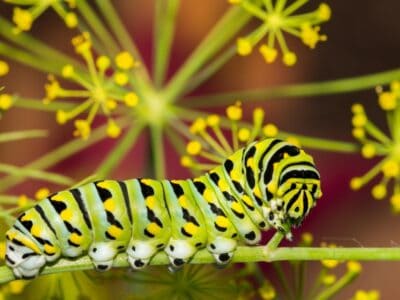Below you can find a complete list of Solomon Island animals. We currently track 135 animals in Solomon Islands and are adding more every day!
On a stretch of the South Pacific Ocean called the Solomon Sea, the Solomon Islands is an independent island nation. This archipelago of 1000 islands is east of Papua New Guinea and northeast of Australia. The Solomon Islands has a wet, tropical climate. The land is largely hilly and forested. This region includes coastal strand vegetation, mangrove forests, freshwater swamps, lowland rain forests, and montane rain forests.
These environments are home to many unique bird and mammal species. There are dozens of bat species and unique, adorable animals like the golden ringtail possum (Pseudochirops corrinae), common spotted cuscus (Spilocuscus maculatus), and sugar glider (Petaurus breviceps).
Its marine animals include striped dolphins, rough-toothed dolphins, and pygmy killer whales. The Solomon Islands has healthy reef systems that are home to leatherback and green turtles, reef sharks, and manta rays. Tuna, barracudas, and sailfish swim in the ocean waters.
Unique reptiles include the Rennell Island monitor, the spotted emo skink and the Malukuna webbed frog.
The Official National Animal of Solomon Islands
The official national animal of Solomon Islands is the hawksbill turtle. This sea turtle spends its life in the deep ocean, shallow tidal ponds, and coral reefs. A hawksbill turtle can be 3 feet long and weigh up to 180 pounds. Like all sea turtles, the national animal is in danger of becoming extinct.
Where To Find the Top Wild Animals in Solomon Islands
The Solomon archipelago has rich and diverse marine life, including coral reefs and seagrass meadows. It is part of the Coral Triangle, which is a section of the western Pacific that has the world’s most diverse coral and coral reef species. These waters have 494 species of coral and 1019 species of reef fish.
If you visit Rob Roy Island or Taro Island, you may spot dugongs. These gentle sea giants are endangered everywhere. The underwater seagrass meadows are their preferred habitat.
Bird watching has become a popular activity for visitors to the Solomon Islands. In the mountain areas, birders have spotted Kolombaranga leaf warblers and fearful owls. The coastal areas are ideal for spotting Sandford’s sea eagles and crested cuckoo-doves. The jungle areas of the lowlands are home to lorikeets, parrots, and kingfishers.
Snorkelers and scuba divers can enjoy the bright, clear water and a vast array of tropical fish, dugongs, barracudas, and manta rays. You can watch dolphins and reef sharks underwater while boating or sea kayaking.
Birds are abundant in the Solomon Islands. The trees are alive with brightly colored tropical birds and songbirds. Birders have spotted many unique, rare bird species, including ultramarine kingfisher, Solomons cockatoo, and midget flowerpecker.
The Most Dangerous Animals in Solomon Islands Today
- Sharks: The waters of the Solomon Islands have high numbers of bull sharks and hammerhead sharks. These large, aggressive sharks are likely to attack anything they encounter in the water. The underwater regions are also home to reef sharks, but they are harmless to humans.
- Crocodiles: Saltwater crocodiles (Crocodylus porosus) are native to the Solomon Islands. Like their Australian cousins, these huge, aggressive beasts can weigh up to 1000 pounds. According to a 2019 report, there were 225 saltwater crocodile attacks on humans in the past 10 years. Of these, 83 were fatal, and 31 were attacks on children.
Endangered Animals in Solomon Islands
- The Solomon Islands is home to about 30 bat species, including the large bats known as flying foxes. The Bougainville monkey-faced bat (Pteralopex ancep), Guadalcanal monkey-faced bat (Pteralopex atrata), and montane monkey-faced bat (Pteralopex pulchra) are in danger of becoming extinct.
- Endangered rodents include the Specht’s mosaic-tailed rat (Melomys spechti), Poncelet’s giant rat (Solomys ponceleti) and emperor rat (Uromys imperator).
- Critically endangered bird species include the Makira moorhen (Gallinula silvestris), yellow-legged pigeon (Columba pallidiceps) and thick-billed ground dove (Gallicolumba salamonis).
Unique Wildlife of Solomon Islands
Like many South Pacific islands, the Solomon Islands is home to unusual tropical species. Birds and butterflies are abundant, and fish and marine mammals swim in the warm waters. Bird watching, snorkeling, and wildlife photography tours are some of the best ways to see this unique wildlife.
Flag of Solomon Islands
The flag of the Solomon Islands consists of a field of light blue and dark green colors divided by a diagonal yellow band, which connects the flag’s lower hoist and upper-fly corners.
Solomon Island Animals

Ant
First evolved 100 million years ago!

Archerfish
Archerfish can shoot a stream of water up to five feet with amazing accuracy.

Barn Owl
Found everywhere around the world!

Bat
Detects prey using echolocation!

Bed Bugs
Bed bugs feed for 4-12 minutes.

Bee
Rock paintings of bees date back 15,000 years

Beetle
There are more than 350,000 different species

Bird
Not all birds are able to fly!
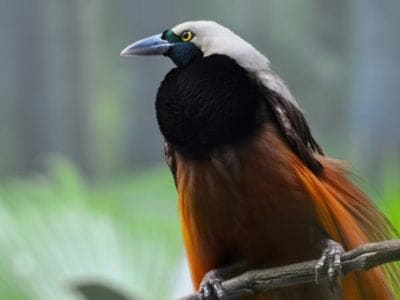
Bird Of Paradise
There are around 50 different species!

Biscuit Beetle
The biscuit beetle form a symbiotic relationship with yeast

Black Widow Spider
They typically prey on insects!

Brown Dog Tick
Can live its entire life indoors

Budgerigar
Natively found in Australia!

Butterfly
There are thought to be up 17,500 species!

Camel Cricket
The camel crickets that are found in the USA are light brown in color. They also have dark streaks all over their body.

Cat
May have been domesticated up to 10,000 years ago.

Caterpillar
The larvae of a moth or butterfly!

Catfish
There are nearly 3,000 different species!

Centipede
There are about 3,000 documented species!

Chicken
First domesticated more than 10,000 years ago!
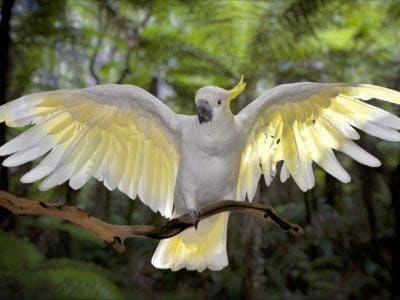
Cockatoo
Highly social, smart, and chatty bird.

Cockroach
Dated to be around 300 million years old!

Coconut Crab
The largest terrestrial arthropod in the world

Common Furniture Beetle
The common furniture beetle feeds exclusively on wood

Common House Spider
House spiders have the ability to eat most insects in a home.
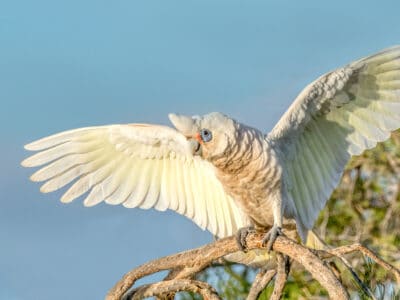
Corella
Corella birds are noisy, especially during the early morning or late evening.

Cormorant
They can fly 35 mph and dive 150 feet below water.

Cow
There are nearly 1.5 billion worldwide!

Crab
There are 93 different crab groups

Crab Spider
Crab Spiders can mimic ants or bird droppings

Crane
Many are critically endangered species!
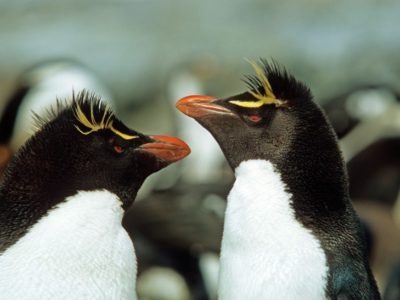
Crested Penguin
Has long yellow eyebrows!

Cricket
Male crickets can produce sounds by rubbing their wings together

Crocodile
Have changed little in 200 million years!

Crocodylomorph
Crocodylomorphs include extinct ancient species as well as 26 living species today.

Dog
First domesticated in South-East Asia!

Dog Tick
Dog ticks feed on dogs and other mammals

Donkey
First domesticated 5,000 years ago!

Dragonfly
It's larvae are carnivorous!

Duck
Rows of tiny plates line their teeth!

Dung Beetle
The dung beetle can push objects many times its own weight

Earthworm
They are hermaphrodites, which means they have male and female organs

Earwig
There are nearly 2,000 different species!

Eclectus Parrot
Does not squawk like other parrot species.

Eel
Eels can be a mere few inches long to 13 feet!

False Widow Spider
False spiders actually prey on black widow spiders and other hazardous spiders

Firefly
The firefly produces some of the most efficient light in the world

Flea
Adult fleas can jump up to 7 inches in the air

Fly
There are more than 240,000 different species!

Frog
There are around 7,000 different species!

Fruit Fly
Fruit flies are among the most common research animals in the world

Gecko
There are thought to be over 2,000 species!

Giant Trevally
The largest fish in its genus

Glowworm
Found inhabiting dense woodland and caves!

Gnat
Males form large mating swarms at dusk

Grasshopper
There are 11,000 known species!

Hamster
Able to run as quickly backwards as forwards!

Hare
Can reach speeds of over 50 mph!

Hawk Moth Caterpillar
Many hawk moth caterpillars eat toxins from plants, but don’t sequester them the way milkweed butterflies do. Most toxins are excreted.

Heron
Inhabits wetlands around the world!

Highland Cattle
Natively found in the Scottish Highlands!

Honey Bee
There are only 8 recognized species!
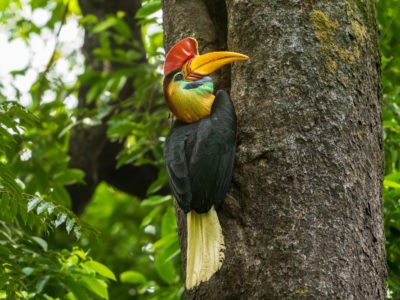
Hornbill
The bird has a massive horn on its bill!

Horse
Has evolved over 50 million years!

Horsefly
Horseflies have been seen performing Immelmann turns, much like fighter jets.

Housefly
The fly has no teeth

Human
Thought to have orignated 200,000 years ago!

Ibis
Found in swamps, marshes and wetlands!

Insects
There are an estimated 30 million species!

Ladybug
There are more than 5,000 species worldwide!

Leech
Has 10 pairs of eyes!

Lizard
There are around 5,000 different species!

Magpie
They are found across Europe, Asia and Africa!
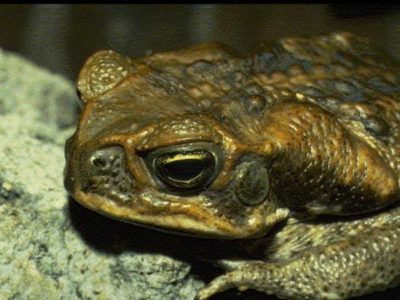
Marine Toad
Produces a toxin used in arrow darts!

Mayfly
There are 2,500 known species worldwide!

Mealybug
They have a symbiotic relationship with ants.

Millipede
Some species have a poisonous bite!
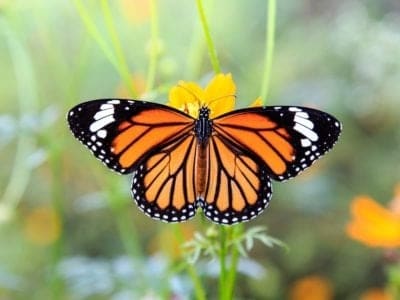
Monarch Butterfly
During migration, Monarch Butterflies may travel 250 or more miles each day.

Mongrel
Has characteristics of two or more breeds!

Monitor Lizard
Some species are thought to carry a weak venom!

Monkey
There are around 260 known species!

Moorhen
Feeds on aquatic insects and water-spiders!

Moth
There are 250,000 different species!

Mouse
Found on every continent on Earth!

Nematode
Nematodes range in size from 1/10 of an inch to 28 feet long

Orb Weaver
Females are about four times the size of males

Otter
There are 13 different species worldwide

Owl
The owl can rotate its head some 270 degrees
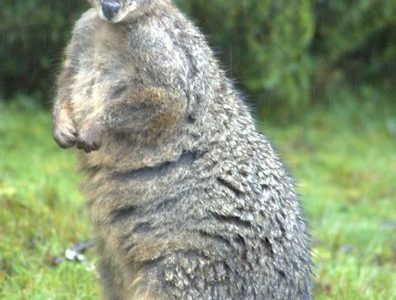
Pademelon
Inhabits the jungles of the far east!

Parrot
Can live for up to 100 years!

Pheasant
Females lay between 8 and 12 eggs per clutch!

Pompano Fish
They are bottom-feeders

Possum
There are 69 species on the Australian continent!

Praying Mantis
The mantis can turn its head 180 degrees.

Quail
Inhabits woodland and forest areas worldwide!

Rat
Omnivores that eat anything!

River Turtle
Inhabits freshwater habitats around the world!

Robin
There are more than 45 species in Australia alone!

Rodents
The capybara, the world’s largest rodent, likes to be in and around bodies of water. Because of this, the Catholic Church in South America decided that it was a fish, and people were allowed to eat it during Lent and First Fridays.

Rooster
Will mate with the entire flock!

Sable Ferret
Ferrets were used during the Revolutionary War to keep down the rat population.

Sand Crab
The sand crab burrows beneath the sand with its tail

Scorpion
There are around 2,000 known species!
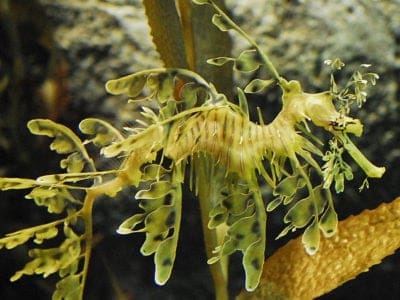
Sea Dragon
Inhabits tropical coastal waters of Australia!

Sea Eagle
The sea eagle tends to mate for life with a single partner

Sea Snake
The sea snake is incredibly venomous, even more than a cobra!”

Seahorse
Males give birth to up to 1,000 offspring!

Sheep
Around 35 million in the English countryside!

Shrimp
There are 2,000 different species worldwide!

Smokybrown Cockroach
Has up to 45 eggs per egg case

Snail
There are nearly 1,000 different species!

Snake
There are around 4,000 known species worldwide

Sparrow
There are 140 different species!

Spotted Garden Eel
Males battle each other over females and territory

Stick Insect
There are more than 3,000 different species!
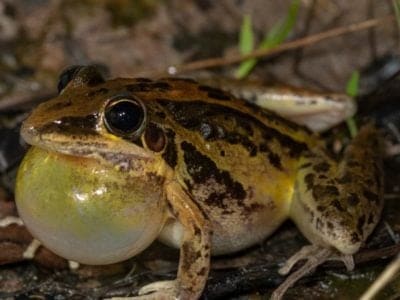
Striped Rocket Frog
Long powerful hind legs!

Swan
Populations have been affected by pollution!

Tarantula Hawk
Tarantula hawks are excellent pollinators, especially for milkweed.

Termite
Their mounds can be up to 9 meters tall!

Tick
They inject hosts with a chemical that stops them from feeling the pain of the bite

Tiger Beetle
The adult tiger beetle is one of the fastest land insects in the world

Tortoise
Can live until they are more than 150 years old!

Tree Snake
Though this snake’s venomous bite isn’t harmful to adults, it can be dangerous to children

Turtles
Some species of aquatic turtles can get up to 70 percent of their oxygen through their butt.

Ulysses Butterfly
Ulysses butterflies have come back from endangered status to just "threatened."
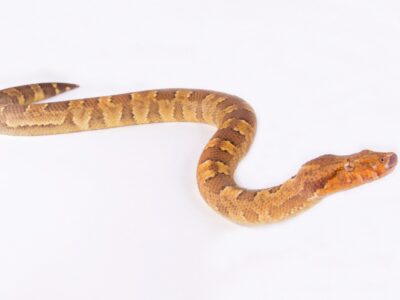
Viper Boa
These boas aren't really vipers, they're nonvenomous constrictors that look like vipers.

Wasp
There are around 75,000 recognised species!

Water Buffalo
Has been domesticated for thousands of years!
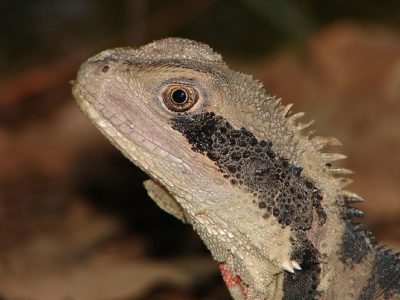
Water Dragon
Spends most of it's time in the trees!

Wolf Spider
Carnivorous arachnid that hunts its prey.

Woodlouse
This animal can roll up into a ball

Worm
Doesn’t have eyes.
Solomon Island Animals List
- Ant
- Archerfish
- Barn Owl
- Bat
- Bed Bugs
- Bee
- Beetle
- Bird
- Bird Of Paradise
- Biscuit Beetle
- Black Widow Spider
- Brown Dog Tick
- Budgerigar
- Butterfly
- Camel Cricket
- Cat
- Caterpillar
- Catfish
- Centipede
- Chicken
- Cockatoo
- Cockroach
- Coconut Crab
- Common Furniture Beetle
- Common House Spider
- Corella
- Cormorant
- Cow
- Crab
- Crab Spider
- Crane
- Crested Penguin
- Cricket
- Crocodile
- Crocodylomorph
- Cuckoo
- Dog
- Dog Tick
- Donkey
- Dragonfly
- Duck
- Dung Beetle
- Earthworm
- Earwig
- Eclectus Parrot
- Eel
- False Widow Spider
- Firefly
- Flea
- Fly
- Frog
- Fruit Fly
- Gecko
- Giant Trevally
- Glowworm
- Gnat
- Grasshopper
- Hamster
- Hare
- Hawk Moth Caterpillar
- Heron
- Highland Cattle
- Honey Bee
- Hornbill
- Horse
- Horsefly
- Housefly
- Human
- Ibis
- Insects
- Ladybug
- Leech
- Lizard
- Magpie
- Marine Toad
- Mayfly
- Mealybug
- Millipede
- Monarch Butterfly
- Mongrel
- Monitor Lizard
- Monkey
- Moorhen
- Moth
- Mouse
- Nematode
- Orb Weaver
- Otter
- Owl
- Pademelon
- Parrot
- Pheasant
- Pompano Fish
- Possum
- Praying Mantis
- Quail
- Rat
- River Turtle
- Robin
- Rodents
- Rooster
- Sable Ferret
- Sand Crab
- Scorpion
- Sea Dragon
- Sea Eagle
- Sea Snake
- Seahorse
- Sheep
- Shrimp
- Smokybrown Cockroach
- Snail
- Snake
- Sparrow
- Spotted Garden Eel
- Stick Insect
- Striped Rocket Frog
- Swallowtail Butterfly
- Swallowtail Caterpillar
- Swan
- Tarantula Hawk
- Termite
- Tick
- Tiger Beetle
- Tortoise
- Tree Snake
- Turtles
- Ulysses Butterfly
- Viper Boa
- Wasp
- Water Buffalo
- Water Dragon
- Wolf Spider
- Woodlouse
- Worm
Animals in Solomon Islands FAQs (Frequently Asked Questions)
What Animals Live in the Solomon Islands?
Like many island nations, Solomon Islands developed many unusual animals you can only see here. Its species include:
- 300 bird species, of which 102 are endemic.
- 47 mammal species, of which 27 are endemic.
- 1019 species of reef fish.
- 130 butterfly species.
- 86 reptile species.
The Solomon Islands is home to most species you will find in tropical settings. The coastal reefs are home to sea turtles, dugongs, and many shark species. It has animals similar to those in Indonesia and Australia, including the cuscus, a small, cute marsupial that lives in the trees.
Are There Poisonous Snakes in Solomon Islands?
The Solomon Islands coral snake (Loveridgelaps elapoides) is a medium-sized snake endemic to the Solomon Islands. This brightly colored snake averages 3 to 4 feet. Although its venom is highly toxic, it is a very shy, secretive snake that few humans ever encounter. It lives in forested areas near streams and lakes.
Sea snakes in the Solomon Islands include the yellow-bellied sea snake and the Belcher’s sea snake. Their bites can be fatal.
What Is the Most Dangerous Animal in Solomon Islands?
The saltwater crocodile is the most dangerous animal in the country. The largest living reptile, this animal kills an average of five people every year. After an increase in recorded attacks, the government has considered lifting a ban on hunting crocodiles. The ban was passed to help preserve crocodiles, which were once almost extinct.






